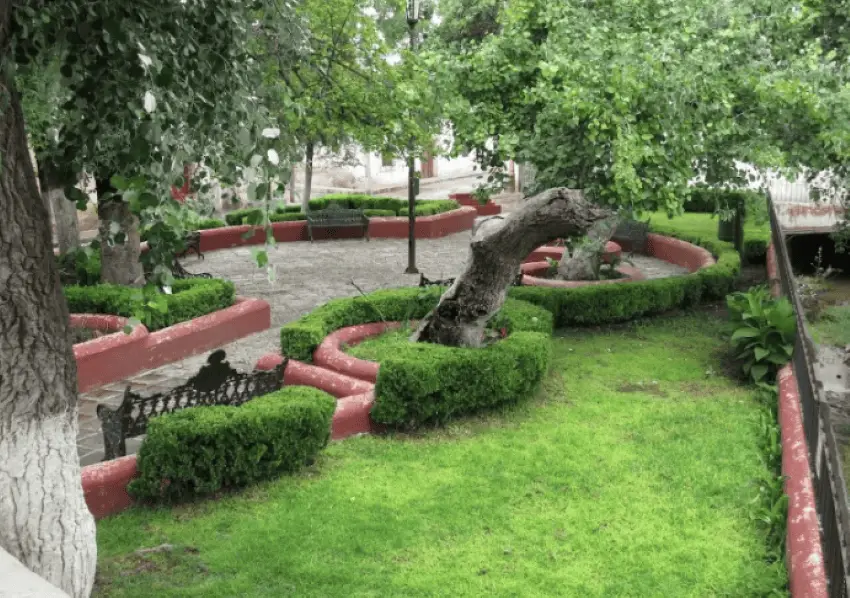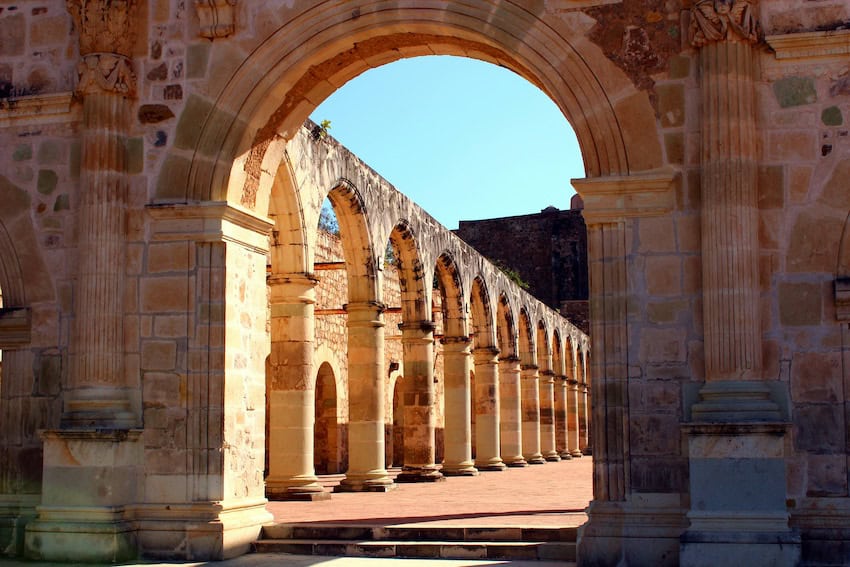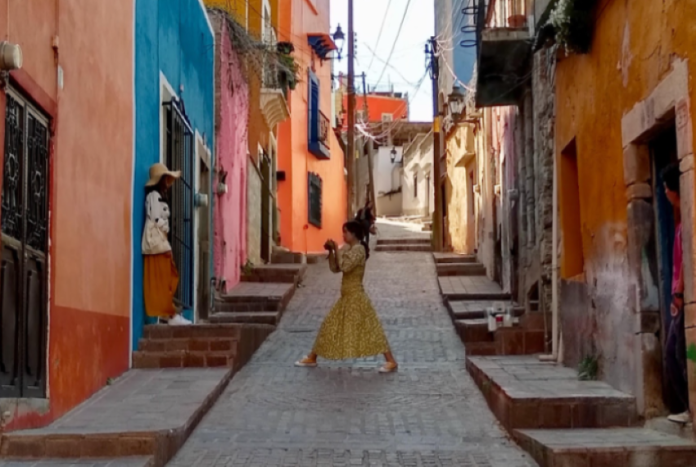It’s a Tuesday morning around 10:00, and I’m strolling along a pedestrian street in Guanajuato, Mexico, passing vendors selling cut-up fruit, corn on the cob, and pies. Later today, I might see the mime artist who wears an Edwardian top hat and sits erect in his chair, regally pouring water into a cup from his silver tea service. While Guanajuato is a bustling city of almost 200,000 people, it seldom feels like an urban area.
Instead, Guanajuato is a city filled with rhythm and movement. All day long, the streets are so colorful and lively that walking anywhere is a pleasure. Vibrant as it is, this is a place far from unique among Mexican cities. Whether you’re a visitor to Mexico or a resident, you can’t help but notice how every town has a generous amount of public space, and in particular a central plaza or “zócalo,” as it’s also called. Families, flirting teenagers, vendors, kids playing, mariachi bands, and the elderly all commingle in this “community living room.”

Mexico’s plazas date back to Spanish laws in the 1500s, which required that every town have a public plaza surrounded by streets, arched passageways, a church, and public buildings. However, the Spanish were not the only people who left their architectural legacy in Mexico. The Moors, during their 700-year rule of Spain, brought with them from North Africa their Islamic art and architecture, such as ornate tile work, intricate geometric patterns, arches, and courtyards – all of which made their way to Mexico. Today, Mexican urban design is one of its greatest strengths. In addition to the ubiquitous plazas, here are eight examples of creative use of public space found in the country.
- Colorful, User-Friendly Streets. Streets in Mexico aren’t empty; instead, they’re jammed with people – bustling and busy without being claustrophobic. Buildings rarely have setbacks but instead meet the sidewalk close up, creating a sense of coherence and unity.
Streets tend to be narrow, not the wide suburban-style streets dedicated to cars that you usually see in the US. No surprise, then, that I love wandering Guanajuato’s more than 3000 twisting, labyrinthine alleys, where I often come upon a surprise — a bench, an altar carved into a recessed wall, or a half-crumbling wall.

- A Sense of Enclosure. William Whyte, author of The Social Life of Small Urban Spaces maintains that the best public spaces offer the perception of being surrounded, creating a sense of intimacy and coziness. Mexican plazas are usually at least one square block in size, but they’re framed by a variety of features that foster a homey room-like quality. Besides a central kiosk or gazebo, they include benches, landscaping, trees, low walls, columns, sculptures, and murals.
- Benches. Nowhere in the world have I seen as many benches as in Mexico. Benches invite! They say, “Welcome. Stay awhile. Join us.” As people sit, they chat, play music, flirt, eat ice cream, and feed the birds — what the urban visionary Jane Jacobs, author of The Death and Life of Great American Cities, called the “sidewalk ballet.”

Benches are not trivial. Edwin Heathcote, architecture and design critic for The Financial Times, calls the public bench “the seat of civilization” because it is a democratic space, available for people at any level of society. “A bench is a small space in the melee of the metropolis where it is acceptable to do nothing, to consume nothing, to just be,” he adds.
- Pavements. Heathcote also wrote eloquently about the importance of pavement in urban design. He calls it “the skin of the city…a thin surface that can have a hugely powerful effect on how the city feels, looks, and behaves.”
Many Mexican towns, like Guanajuato, have a signature pavement style. But the use of aesthetic design is not just outside. I’m often struck by interior flooring — the elegant tile work and marble in Mexican atriums, banks, churches, shopping centers, staircases, supermarkets, and restaurants.
- Doors, Arches, and Other Portals. Recently I took an acrylic painting class called “Doorways of Guanajuato,” whose theme reflected our human fascination with portals. Doors are a symbol of transition, delineating one state from another: outside versus inside, leaving versus returning.

Some Mexican cities are famous for their doorways alone. In San Miguel de Allende’s central district, for example, there are said to be more than 2,000 distinct doorways.
Arches, too, are common throughout Mexico. Another Moorish import, arches were introduced during Spanish colonization and used in haciendas to create a sense of depth, perspective, and enclosure.
- Public Art. No matter which town where you happen to be in Mexico, you’ll find sculptures in a park or square. Some are breathtaking, like the one I saw of a man playing the piano in the otherwise unremarkable town of Huichapan, Hidalgo.
- Balconies. “Give me a balcony and I will become president,” boasted Jose Maria Velasco, Ecuador’s most prominent populist, who delivered on his promise by being elected five times, starting in the 1930s.
Who doesn’t love a balcony? Someone standing high up has a perfect, big-picture perch to watch the street rhythms below, while those on the street can look up and observe people hanging their clothes, sipping coffee, or stealing a kiss. Balconies are an invitation to permitted voyeurism. Thanks to the Spanish, the Moors, and the French, few urban Mexican spaces are without these windows into the nation’s soul.

- Courtyards. One reason I enjoy visiting Mexican museums is that the buildings themselves are visually pleasing, often built around a tranquilo inner courtyard with a fountain at the center. Courtyards are another legacy of the Moors, who designed lush inner patios within their mosques and palaces. They considered courtyards an “earthly paradise.” This tradition continues in Mexico, where you’ll find graceful courtyards not just in museums, but also in government buildings, hotels, and private homes.
I fantasize that U.S. public works officials, instead of spending hundreds of thousands of dollars on feasibility studies, would visit Mexico and consult with urban planners, who intuitively know how to design cities that invite a sense of connection, pleasure, and safety. That Mexico, a country where the average income is one fifth that in the US, invests in such “non-essentials” as art and aesthetics reflects to me a deep respect for the human spirit.
Louisa Rogers and her husband Barry Evans divide their lives between Guanajuato and Eureka, on California’s North Coast. Louisa writes articles and essays about expat life, Mexico, travel, physical and psychological health, retirement and spirituality. Her recent articles are on her website, https://authory.com/
